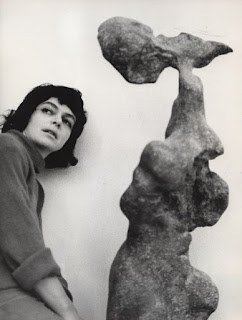Embodied knowledge, A Case
Study: Thinking Through Practice.
An artist and senior lecturer talks about her practice.
Susan is a sculptor and Director of Fine Art Studies at a Northern
University. What was formerly a college has recently earned university status.
All the lecturers as a result of the upgrade have had to alter the way they
think about their art practices and how they reflect on teaching practice and
where the two might intersect to benefit the institution, the students and the
individual.
This culture change has been a slow a difficult one. My FE
students are resistant to writing, which is the focus of my MPhil; possible
reasons are, they just want to make art, they don’t want to write or be asked
to think or spend time reflecting that could be spent making. Other reasons
could be a learning barrier such as dyslexia and being on the autism spectrum.
They are adults and may have dependents to care for and part time jobs that fit
around study.
Many artists think visually and are in tune with speaking and
listening rather than reading and writing. In the same way the
lecturing staff have also been resistant to research and have had negative
feelings towards what they presuppose it to entail, possibly because of some of
the same reasons as students, lack of time, pressure from work and family
commitments.
Facilitated by the very able Research Director Sophrosyne, this
transition has allowed staff to rethink and reimagine what research might be
for a lecturer who is at the same time an art and design practitioner.
Sophrosyne has expanded and augmented the definitions of what it means to be a
researcher and the kinds of activities that could be called research. For
instance one lecturer has used dance practice, one has used furniture making,
one has built a playpark in South Africa and many have had art exhibitions. All
these can be used as research if they are recorded, reflected on and have drawn
on academic philosophies and thought and brought it to bear on these diverse
projects.
Susan’s sculpture practice includes a writing practice and making,
she believes the studio is very important, and denotes the studio as small
holding where ideas through slow crafting have time and space to grow, as place
of experimentation where things may never get resolved and things are allowed
to fail in order to learn from them, it is the sanctity of ‘A Room of One’s
Own’ (2002) as advocated by Virginia Wolf in 1929. Denied entry to an oxford
library because she was a woman Wolf’s riposte was typically defiant, “Lock up
your libraries if you like; but there is no gate, no lock, no bolt that you can
set upon the freedom of my mind.”
At a Local gallery Susan was
called upon to be an expert witness in the ‘lost’ sculptures of Alina
Szapocznikow. As the artist had passed away, information of the sculptures
construction was missing, her practice was not recorded.
Susan because of innate
understanding of the assembly and modelling of figures and heads from her own
education at art school, as she called it, her professor’s methods brought
forward and put into practice. Past pedagogy conflated with Susan’s
continued mastery of the ‘hand’(Sennett 2008 and Hyland 2018), her continued
practice, has a conception of how Szapocznikow’s cast and concrete
filled sculptures were made, calling it the artist’s ‘Psychological
fingerprint’.
Susan comprehends, through
appreciation of her own practice (also using complex multi piece moulds),
something a local theorists Ganymede had not understood when she had written a
paper on Alina Szapocznikow’s sculpture about the nature of making. Susan
was able to explain it to Ganymede through her embodied experience as a maker
sculptor her art practice together with reflection and research gave her the
understanding of the meaning of seam lines from the casting process.
All
establishments, universities and colleges and case study names have been
anonymised.
Gaffney, S., (2018) Seminar
on a life in Practice, for the MA in Creative Practice, Leeds Arts
University.
Hyland, T., (2017) Craft Working
and the “Hard Problem” of Vocational Education and Training. Open
Journal of Social Sciences, 5, 304-325. https://doi.org/10.4236/jss.2017.59021.
LSIS/SET/SUNCETT MPHIL Residential Conference, Seaburn Marriott, Feb 2018.
Sennett, R. (2008). The
Craftsman. London, Penguin
Hepworth (2017) 'Lost' sculpture
by Polish artist Alina Szapocznikow to be displayed in first UK retrospective, seen at: https://hepworthwakefield.org/news/lost-sculpture-by-polish-artist-alina-szapocznikow-to-be-displayed-in-first-uk-retrospective/
, accessed 3 March 2018
Wolf, V., (2002) A Room of One’s Own, London, Penguin.
(First written 1929).
Image: Alina Szapocznikow and
her sculpture 1960’s.




Comments
Post a Comment